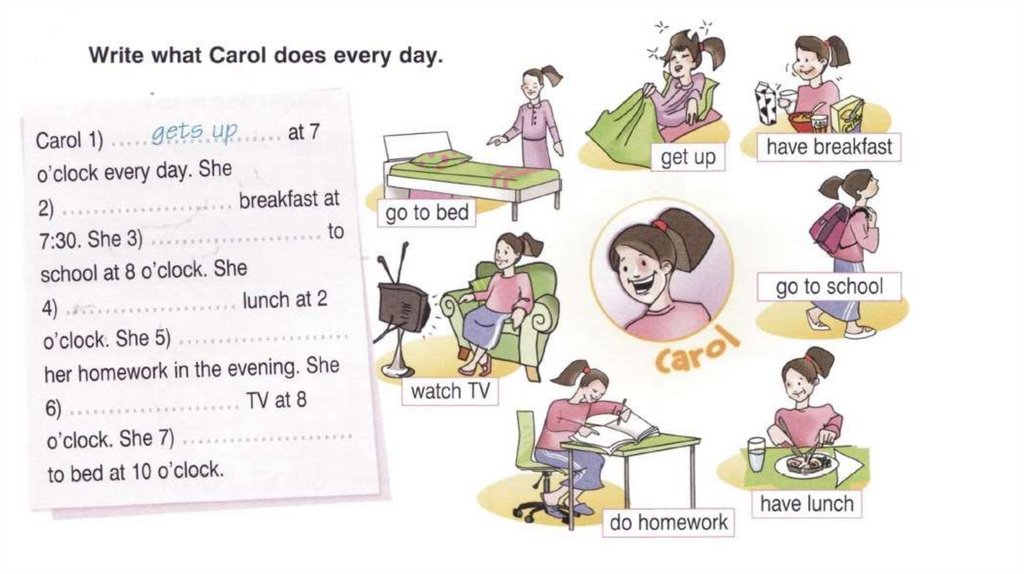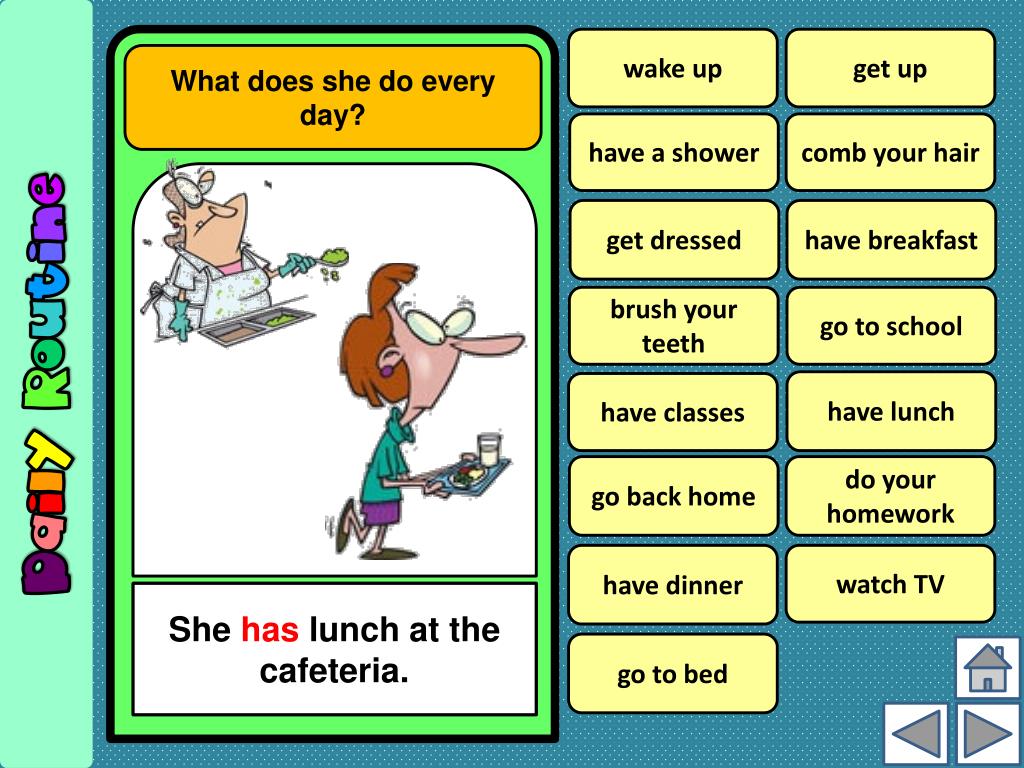What does it mean when you have headaches everyday. Daily Headaches: Causes, Types, and When to Seek Medical Attention
What causes daily headaches. How to identify different types of chronic headaches. When should you be concerned about frequent headaches. What treatments are available for recurring headaches.
Understanding the Frequency of Headaches
Experiencing headaches on a daily basis can be both frustrating and concerning. While occasional headaches are common, persistent or chronic headaches may indicate an underlying issue that requires attention. It’s essential to understand the difference between normal headache patterns and those that might signal a more serious condition.
Chronic headaches are defined as headaches that occur 15 or more days per month for at least three months. These can significantly impact one’s quality of life and productivity. But what causes such frequent headaches?
Common Triggers for Daily Headaches
- Alcohol consumption
- Caffeine intake or withdrawal
- Dehydration
- Hunger or skipping meals
- Lack of sleep or poor sleep quality
- Sensory stimuli (bright lights, loud noises, strong odors)
- Stress and anxiety
Understanding these triggers can help in managing and potentially reducing the frequency of headaches. However, it’s important to note that chronic headaches can also be linked to other disorders, including depression, sinus infections, allergies, and temporomandibular joint dysfunction (TMJ).
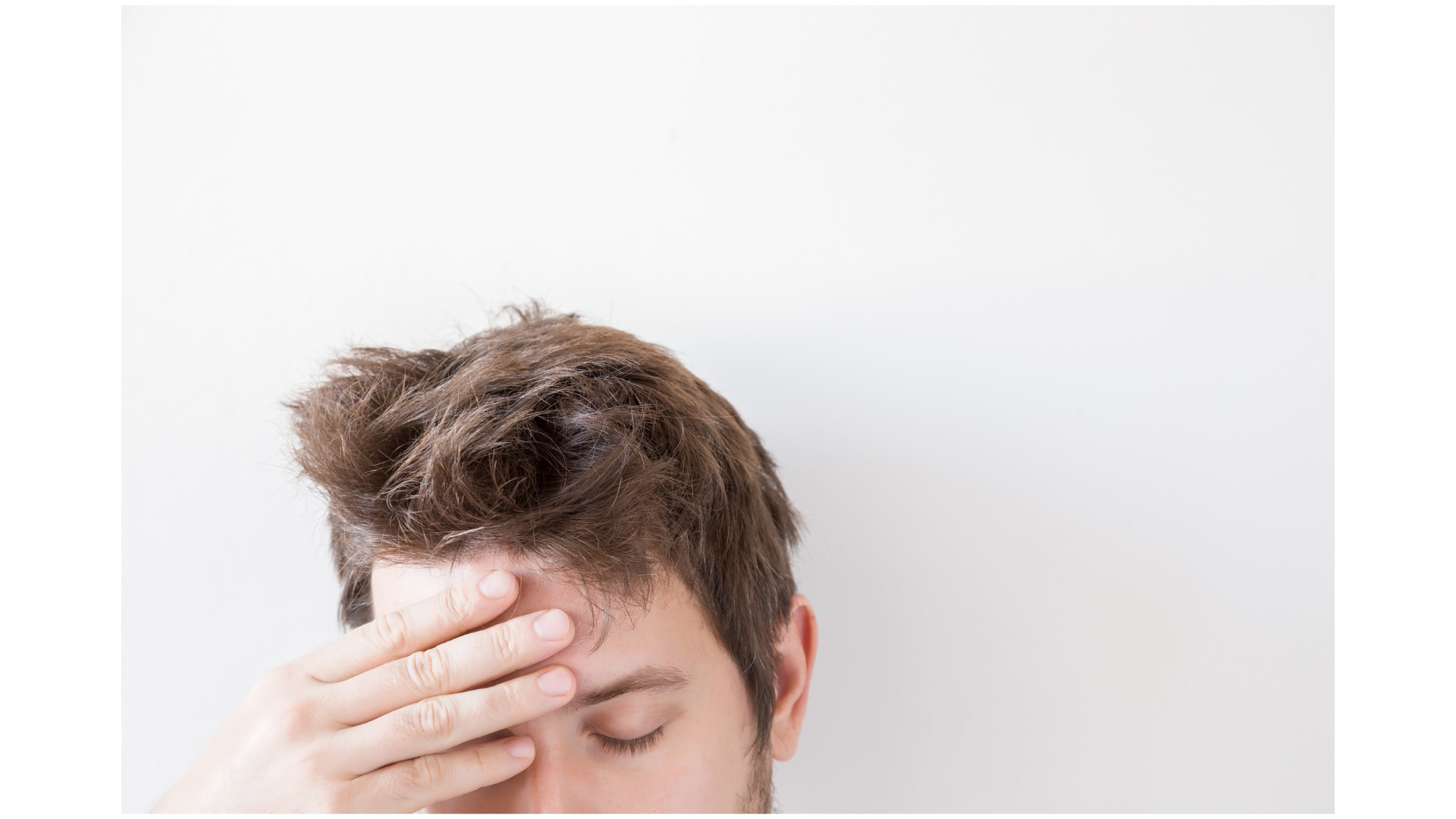
Types of Chronic Headaches
Not all headaches are created equal. Different types of chronic headaches present with varying symptoms and require different approaches to treatment. Let’s explore some of the most common types:
Tension Headaches
Tension headaches are the most prevalent type of chronic headache. They typically cause a pressing or tightening sensation on both sides of the head. What characterizes a tension headache? These headaches often feel like a band squeezing around the head, with pain ranging from mild to moderate.
While over-the-counter pain relievers can provide temporary relief, long-term use may lead to medication overuse headaches. Alternative treatments such as meditation, relaxation techniques, or heat therapy may be more beneficial for managing tension headaches in the long run.
Migraines
Migraines are less common but often more severe than tension headaches. They can cause intense, throbbing pain, often on one side of the head. What sets migraines apart from other headaches? Migraines are often accompanied by additional symptoms such as:

- Nausea and vomiting
- Sensitivity to light and sound
- Visual disturbances (auras)
- Dizziness
Migraines affect women more frequently than men and may require prescription medications for effective management. However, resting in a quiet, dark room and using hot or cold compresses can also provide relief.
Cluster Headaches
Cluster headaches are less common but extremely painful. They typically affect one side of the head, often behind the eye. What makes cluster headaches unique? These headaches occur in clusters or cycles, with multiple headaches happening daily for weeks or months, followed by periods of remission.
Men are more likely to experience cluster headaches. Symptoms often include watery eyes and a restless feeling. Due to their severity, cluster headaches usually require prescription medications for effective treatment.
New Daily Persistent Headache (NDPH)
NDPH is a type of chronic headache that develops suddenly in people without a prior history of frequent headaches. What’s distinctive about NDPH? Individuals with NDPH can often pinpoint the exact day their headaches began.

The symptoms of NDPH can mimic those of tension headaches or migraines. Due to its sudden onset and persistent nature, NDPH often requires medical evaluation to rule out any underlying conditions.
When to Seek Medical Attention
While most headaches are not indicative of a serious problem, certain symptoms warrant immediate medical attention. When should you be concerned about your headaches?
- Sudden onset of severe headache, often described as a “thunderclap”
- Headaches accompanied by neurological symptoms (confusion, weakness, vision changes)
- Progressively worsening headaches
- Headaches that wake you from sleep
- Headaches that change in pattern or severity
Dr. Jonathan J. Russin, a neurosurgeon at Keck Medicine of USC, advises, “Progressive symptoms of more severe or frequent headaches, or any headache that is also associated with other neurological symptoms, should be evaluated by a physician.”
Diagnosing Chronic Headaches
Accurate diagnosis is crucial for effective headache management. How do doctors diagnose chronic headaches? The process typically involves:

- Detailed medical history
- Physical and neurological examination
- Headache diary analysis
- Imaging tests (in some cases)
Keeping a headache diary can be incredibly helpful in identifying patterns and triggers. The National Headache Foundation provides a template that can assist in tracking your headache experiences.
Treatment Options for Chronic Headaches
The treatment approach for chronic headaches depends on the type and underlying cause. What are some common treatment options for recurring headaches?
Medication-Based Treatments
- Over-the-counter pain relievers (for tension headaches)
- Prescription medications (for migraines and cluster headaches)
- Preventive medications (to reduce frequency and severity)
Non-Medication Treatments
- Lifestyle modifications (sleep hygiene, stress management)
- Dietary changes (avoiding triggers)
- Relaxation techniques and meditation
- Physical therapy
- Cognitive-behavioral therapy
It’s important to work closely with a healthcare provider to develop a tailored treatment plan that addresses your specific headache type and triggers.

Preventing Chronic Headaches
While not all headaches can be prevented, certain strategies can help reduce their frequency and severity. How can you prevent chronic headaches?
- Maintain a regular sleep schedule
- Stay hydrated
- Exercise regularly
- Practice stress-reduction techniques
- Avoid known triggers
- Limit caffeine and alcohol intake
Implementing these lifestyle changes can significantly improve headache management and overall quality of life.
The Impact of Chronic Headaches on Quality of Life
Chronic headaches can have a profound impact on various aspects of life. How do frequent headaches affect daily functioning?
- Reduced work productivity
- Strained personal relationships
- Limitations on social activities
- Increased risk of depression and anxiety
- Sleep disturbances
Recognizing these impacts is crucial in understanding the importance of proper headache management and seeking timely medical attention when needed.
Emerging Research and Future Treatments
The field of headache research is continuously evolving, with new treatments and therapies on the horizon. What are some promising developments in headache treatment?

- CGRP inhibitors for migraine prevention
- Neuromodulation devices
- Personalized medicine approaches
- Advances in understanding headache genetics
These advancements offer hope for improved management of chronic headaches in the future, potentially leading to more effective and targeted treatments.
In conclusion, while daily headaches can be distressing, understanding their causes, types, and available treatments can empower individuals to take control of their headache management. By working closely with healthcare providers and implementing appropriate lifestyle changes, many people can find relief from chronic headaches and improve their overall quality of life.
Are Your Daily Headaches a Sign of Something More Serious?
Don’t fret just yet. The pounding pain in your head may be annoying, but it doesn’t necessarily indicate a bigger problem.
There it is again — the throbbing in your dome. If you’re bothered by frequent headaches, you may be concerned that you have a more serious condition, such as a brain tumor or an aneurysm. And while those and other dangerous conditions can be marked by headaches, it’s likely that your pain is primary. In other words: It’s probably not the result of another condition.
Unfortunately, doctors don’t know what causes most headaches. According to some estimates, only 10% of headaches have a known cause. But there are contributing factors that can trigger chronic headaches, such as:
- Alcohol
- Caffeine
- Dehydration
- Hunger
- Lack of sleep
- Sensory triggers such as bright lights, loud noises and pungent smells
- Stress
Chronic headaches can also be linked to other disorders, including depression, anxiety, sinus infections, allergies and temporomandibular joint dysfunction, also known as TMJ. In order to figure out your headache pattern and identify your triggers, you may want to keep a headache diary to share with your doctor. The National Headache Foundation provides a handy template.
In order to figure out your headache pattern and identify your triggers, you may want to keep a headache diary to share with your doctor. The National Headache Foundation provides a handy template.
Here are a few common types of chronic headaches:
Tension headache
This is the most common type of headache and it’s likely that you’ve had more than one of these in your life. But for some people, they occur almost every day. Tension headaches affect both sides of your head with a pressing, moderate pain. Over-the-counter medications like ibuprofen (Advil) or acetaminophen (Tylenol) often help, but taking them for long periods of time can lead to headaches called “medication overuse” or “rebound” headaches. Instead, you may want to try meditation, relaxation techniques or heat therapy.
Migraine
Migraines, although less common, are more severe. The pain is intense, may pulsate and can be accompanied by nausea, sensitivity to light or sound, vomiting or visual disturbances called “auras. ” Often, migraines only affect one side of the head, although they can affect both. They also affect women more often than men. Prescription medications are available to treat migraines, but you also may benefit from simply resting in a quiet, dark room and using hot or cold compresses. Progressive symptoms of more severe or frequent headaches, or any headache that is also associated with other neurological symptoms, should be evaluated by a physician
” Often, migraines only affect one side of the head, although they can affect both. They also affect women more often than men. Prescription medications are available to treat migraines, but you also may benefit from simply resting in a quiet, dark room and using hot or cold compresses. Progressive symptoms of more severe or frequent headaches, or any headache that is also associated with other neurological symptoms, should be evaluated by a physician
Cluster headache
Men are more likely to have these more sudden headaches, which are often marked by pain on one side of the head, behind the eye. They tend to happen in clustered periods of time, even multiple times a day, then disappear for a while. Eyes tend to water, and a restless feeling is common. These headaches usually require prescription medicines.
New daily persistent headache (NDPH)
If you suddenly get frequent headaches, you may have NDPH. The symptoms of NDPH can mimic tension headaches or migraines, but NDPH occurs in people who don’t have a history of headaches. Often, people with NDPH can remember exactly when the onset happened. Your doctor may need to run tests to make sure these headaches aren’t secondary — that is, a symptom of a serious underlying condition.
Often, people with NDPH can remember exactly when the onset happened. Your doctor may need to run tests to make sure these headaches aren’t secondary — that is, a symptom of a serious underlying condition.
Although daily headaches might not be the result of a dangerous problem, they can affect your quality of life and shouldn’t be considered “normal.”
“Progressive symptoms of more severe or frequent headaches, or any headache that is also associated with other neurological symptoms, should be evaluated by a physician,” says Jonathan J. Russin, MD, a neurosurgeon at Keck Medicine of USC and assistant professor of clinical neurological surgery at the Keck School of Medicine of USC. “Even using these criteria, the majority of headaches will not represent an underlying problem. An exception is a ‘thunderclap’ headache, which refers to the sudden onset of the worst headache of your life. This type of headache should always be evaluated by a physician whether it is associated with other symptoms or not. ”
”
Topics
cluster headache
Dr. Jonathan J. Russin
headaches
migraine
tension headache
Tina Donvito
Tina Donvito is a freelance writer covering health, culture, travel and parenting.
Why Am I Getting Frequent Headaches?
To say, “I have a headache,” is one thing. To say, “I always have headaches,” is another. The latter is often more concerning.
Most people get headaches from time to time. They usually go away with or without any treatment. Frequent headaches are much less common and much more serious. They can disrupt your work or personal life. They can also be a sign of an illness or injury.
“Unfortunately, many people don’t seek help because they think they can cope on their own,” says Christy Jackson, MD, a neurologist and director of the Donald J. Dalessio Headache Center at Scripps Clinic. “They may rely on over-the-counter pain relievers instead of getting medical help. In some cases, headaches are not properly diagnosed.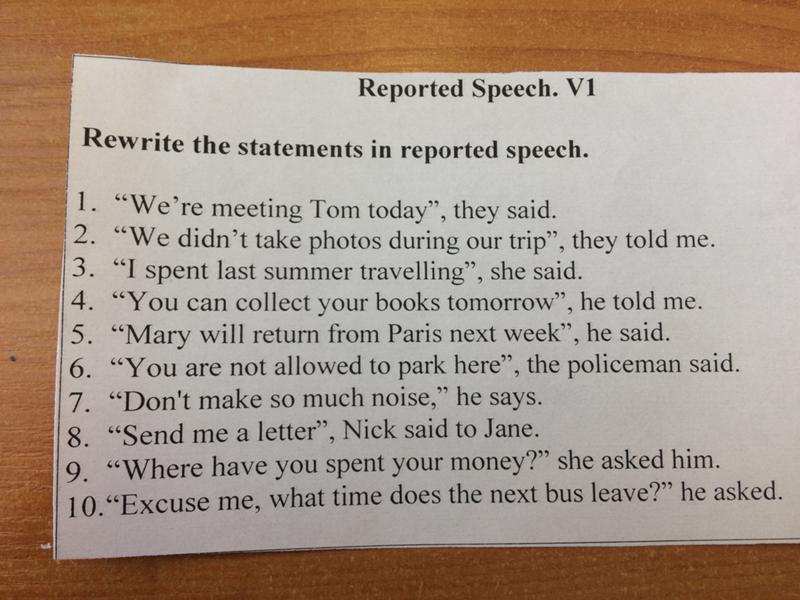 ”
”
Consult with your primary care doctor if your headache symptoms get worse or occur more often despite treatment at home. Your doctor may refer you to a headache specialist.
“No one should go through life suffering from chronic headaches,” Dr. Jackson says. “Not when they are treatable.”
Headache specialists at Scripps help people who suffer from recurring, chronic headaches through a combination of traditional and complementary care with a focus on prevention and lifestyle changes.
“We evaluate your symptoms and design a treatment plan that targets the underlying physical, psychological and environmental causes of your headaches,” Dr. Jackson says.
“There are many effective treatments to relieve symptoms and prevent future attacks,” adds Robert Bonakdar, MD, a pain specialist at the Scripps Center for Integrative Medicine. Treatments may include medication, biofeedback and other therapies.
Dr. Bonakdar stresses the importance of clear and open communication between doctor and patient. “Correct diagnosis depends largely on the information you share with your health care provider.”
“Correct diagnosis depends largely on the information you share with your health care provider.”
It’s important to understand your diagnosis as much as possible, including what type of headache you have and what is causing it. There are many types of headaches, levels of frequency and severity.
Headache pain can range from mild to disabling. Headaches can be episodic or chronic. Episodic headaches occur occasionally. Chronic headaches are more consistent. They can strike for 15 days or more in a month.
Headaches are divided into two main types: primary and secondary. Primary headaches are those not caused by another medical condition. Migraine and tension headaches are the most common.
Secondary headaches are symptoms of another health problem, such as a fever, infection, stress or a head injury.
Tension headaches, which are the most common type of headache, cause mild to moderate pain. They often present as a dull, constant pain felt on both sides of the head, and have no other symptoms.
These type of headaches are caused by tightening or tension in the muscles in the head, neck and scalp. They can be brought on by stress, noise, fumes and even long periods of watching TV or computer screens. They’re easier to handle than other types of headaches because they usually just come and go. Chronic tension headaches are much less common.
Migraine is the most disruptive type of primary headache. It is often marked by a throbbing pain that is moderate to severe. It can last four to 72 hours and happen one to four times a month.
Migraines often include other symptoms. Someone with a migraine may be sensitive to light and sound. They may prefer to be in a dark, quiet space. They may also experience nausea and vomiting and visual disturbances (aura).
Women are more likely than men to get migraines. Migraine attacks may also run in a family and begin at an early age.
Certain environmental factors are common triggers, such as sleep disruption, dehydration, skipped meals, some foods, hormone fluctuations and exposure to chemicals.
“The goal is to treat migraine symptoms right away and to prevent symptoms by avoiding or changing triggers,” Dr. Jackson says.
Cluster headaches are more severe but less common. They often begin on one side of the head and recur for days or weeks. Attacks can last between 15 minutes to three hours and occur every day.
They tend to affect men between the ages of 20 and 50, and smokers. People who experience these types of headaches are often restless, agitated and sweat profusely. Alcohol can trigger an attack.
Also known as rebound headaches, they are caused by an overuse of pain medications, such as aspirin, acetaminophen and ibuprofen. Women are affected more often than men.
When over-the-counter medicine fails to work and headaches become more frequent, medication and other therapies may be prescribed.
Medications to prevent frequent migraines include antidepressants and Botox injections and newer medications.
In 2018, the Food and Drug Administration (FDA) approved a new class of medications that modulate a neuropeptide known as calcitonin gene-related peptide (CGRP) that is believed to play a key role in migraine. Neuropeptides are small protein-like molecules used by neurons to communicate with each other.
Neuropeptides are small protein-like molecules used by neurons to communicate with each other.
For treatment of migraines as they occur, your doctor may prescribe triptans for relief.
Medication for frequent headaches may be combined with non-medication options, such as biofeedback, relaxation, bio stimulation and diet therapy.
Biofeedback uses electronic monitoring to help teach individuals how to control certain physical responses, such as muscle tension.
Many different relaxation therapies are available and can be individualized.
“Manual and massage therapy can be especially helpful for those with significant muscle tension or neck stiffness related to headache,” Dr. Bonakdar says.
For those who may have significant stress and sleep issues, one of the most powerful techniques is mindfulness. “This technique helps individuals increase awareness to manage triggers and automatic responses that often lead to the next headache.”
Mindfulness is typically offered at Scripps as an 8-week stress reduction course.
Biostimulation is a broad term that encompasses therapies such as acupuncture, which involves the use of needles to stimulate specific points of the body to alleviate pain.
“With a treatment course, acupuncture has been found to be as helpful as medication in the prevention of migraines,” Dr. Bonakdar says.
Electrical stimulation and other techniques can also be used. The most recent is the Nerivio wearable device, which was one of Time magazine’s Best Inventions of 2019.
Many headache sufferers often report a diet-related trigger. “When this is the case, the solution may be as simple as identifying and avoiding these triggers or finding a diet or supplement regimen that can fill gaps created by long-term headaches,” Dr. Bonakdar says.
While many foods can cause headaches, some are more common than others. Dr. Bonakdar works closely with the center’s dietician to help patients identify and avoid individualized triggers, which typically fall into a few categories:
- Allergenic foods which may take testing to confirm, such as peanuts and foods made with gluten
- Additives, such as those found in pre-packaged and processed foods
- Artificial sweeteners, such as those found in diet foods to reduce calorie content
- Aged foods, including wine, cheese, sauerkraut and cured meats.

“Diet is just one component of headache management,” he adds. “It’s important to look at the whole person to develop a treatment plan that includes a healthy lifestyle, integrative therapies — and when appropriate — medication.”
Headache – causes, symptoms and diagnosis, indications for visiting a doctor
Perhaps there is no such person in the world who has not had a headache at least once in his life, and about 20% of people suffer from chronic pain. Mentions of this problem are found in ancient manuscripts – the works of doctors and literary works of ancient Egyptian, Greek, Babylonian, Chinese authors. Even then, doctors were trying to find patterns in which pain in the head occurs, and treatment options. In ancient Egypt, there were even special priests who dealt only with the problem of headaches. A panacea has not been found so far, but modern medicine has made significant progress. Now there are effective methods of assistance, and high-precision diagnostic equipment will help to understand the causes of the problem.
Sometimes a completely healthy person can have a headache, and in some cases a headache can be the only practical symptom of some dangerous diseases. Why does pain arise, how to help yourself at home, when you need a doctor’s help, and when there is nothing to worry about – we will consider these issues in more detail with the doctors of the Kutuzovsky Medical Center.
Types and causes of headaches
We feel a headache in those areas where there are pain receptors. It can be different in strength, duration, accompanying symptoms and character. The manifestations and symptoms of a headache are different: someone has a headache in the temples, others complain of frequent headaches in the forehead. Consider the main options.
Migraines
This is an intense headache in the temples on one side of the head, mostly of a throbbing character. The patient exacerbated and painfully reacts to bright light, loud sounds, smells. The attack lasts from several hours to three days, may be accompanied by nausea (in 90% of cases) and vomiting (in 30% of cases). Unpleasant sensations are aggravated by physical exertion, especially sharp ones. Often the whole right side of the head (or left) hurts, and not just the temple.
The attack lasts from several hours to three days, may be accompanied by nausea (in 90% of cases) and vomiting (in 30% of cases). Unpleasant sensations are aggravated by physical exertion, especially sharp ones. Often the whole right side of the head (or left) hurts, and not just the temple.
Migraine is a primary headache, that is, it is not a symptom of any other disease. The cause of migraine is the appearance of inflammatory substances around the nerves and vessels of the head, which provoke pain. Why such a mechanism is activated is not known for certain. An attack can be provoked by mental or physical overstrain, stress, changes in weather, diet, hormonal drugs.
Migraines can be hereditary, women are twice as likely to suffer from them. Several genes have been identified that are responsible for migraines.
Seizures recur periodically throughout life – from several times a week to several times a year. Migraines begin during puberty (less often in childhood).
15-60 minutes before a migraine attack, some people may notice the appearance of a migraine precursor – an aura. This is a neurological phenomenon in which short-term visual disturbances appear (flickering, fogging, narrowing of the field of vision), dizziness, sensory symptoms – tingling, loss of sensation in the hands, nasolabial folds. After an attack for a day or more, the patient may experience general weakness, a weaker headache in the temples than during the acute phase, a state of “hangover”, confusion of thoughts.
Tension pains
This is a pain that “compresses” the head. She is often described as having a tight helmet over her head. There is a headache in the temples, the back of the head, on the forehead, the crown of the head – unpleasant sensations can be, both throughout the head, and in some part. This is the most common type of headache. Feelings are usually moderate, there is no acute pain (as with migraines).
Among the causes that cause this pain are muscle tension due to the same type of work, mental and visual stress, uncomfortable postures, stress, weather changes, non-compliance with the regime of work and rest. An attack can last up to several days. Tension pain is more common in people prone to deep emotional experiences, depression, stress.
An attack can last up to several days. Tension pain is more common in people prone to deep emotional experiences, depression, stress.
Cluster headaches
Most intense pain with severe attacks. They last from 20 minutes to one hour with several attacks per day. In some cases, they may occur daily for a long time (up to several weeks).
During an attack, the head hurts in the forehead or eyes, lacrimation, swelling in the nose, drooping of the eyelids may begin. Middle-aged men are six times more likely to suffer from cluster pain, and about 0.5% of people are familiar with the problem.
These are the main three types of primary headache. Less common, but may be pain from physical or sexual activity, medication.
There is also a secondary headache – it is a symptom of some disease. These include pain associated with:
- Traumatic brain injury. Their other symptoms: dizziness, irritability, memory impairment.
- Injuries or diseases of the cervical spine (osteochondrosis and others).
 With them, the head hurts in the back of the head, visual acuity and hearing may decrease.
With them, the head hurts in the back of the head, visual acuity and hearing may decrease. - Pathologies of cerebral vessels – stratification of the walls, atherosclerosis, aneurysms, strokes and other vascular changes.
- Arterial hypertension – high or low blood pressure. With hypertension, the back of the head hurts, with hypotension, there is weakness, and the head is spinning.
- Infections – encephalitis, meningitis, and other infectious lesions.
- Tumors in the head or neck.
- Diseases and injuries of the ears, sinuses, jaws and teeth, eyes and other structures of the skull. Where and how it will hurt depends on the root cause. So, with glaucoma, a headache is a pain in the eyes that radiates to the forehead.
- Mental illness.
- Excessive use of painkillers, including for headaches.
Diagnosis and treatment
Why does my head hurt and what should I do? The answer to this question will help to give modern diagnostic techniques. This does not mean that the doctor can conclusively find the only “culprit” – the root cause. Especially when it comes to primary headaches (migraine, tension and cluster pain). The physiological processes of their occurrence are not fully understood, although medicine knows a number of factors that provoke an attack.
This does not mean that the doctor can conclusively find the only “culprit” – the root cause. Especially when it comes to primary headaches (migraine, tension and cluster pain). The physiological processes of their occurrence are not fully understood, although medicine knows a number of factors that provoke an attack.
The main task is to determine the type of headache: primary or secondary. The first – although they deliver a lot of discomfort to the patient, interfere with the ability to work, but are not dangerous to health. The pain will go away on its own or after taking medication.
Management of primary headaches:
- Relief of an attack with pain medications: analgesics or other drugs.
- Prophylaxis with drugs that reduce the frequency or intensity of seizures.
- Avoidance of precipitating factors – overwork, certain foods, periodic breaks in work, sufficient sleep and others.
The situation is different with secondary headaches. To help the patient, you need to determine the symptom of what disease is the headache. And treat him. This is especially important for serious pathologies that threaten life or health. Stroke, meningitis, brain tumors – these and other diseases are manifested by headaches.
To help the patient, you need to determine the symptom of what disease is the headache. And treat him. This is especially important for serious pathologies that threaten life or health. Stroke, meningitis, brain tumors – these and other diseases are manifested by headaches.
Help in finding the cause:
- Examination by a neurologist, competent collection of complaints and anamnesis. This is the most important thing in diagnosing headaches.
- Laboratory diagnostics – determination of the main indicators of the body’s work: the level of cholesterol, glucose, leukocytes and other parameters.
- Instrumental diagnostics: MRI of the brain, vessels, neck, dopplerography or duplex examination of the vessels of the brain and neck, radiography.
- Examinations – electroencephalogram, examination by an ophthalmologist, measurement of blood pressure and others.
The main doctor who treats headaches is a neurologist. When it comes to secondary headaches, an ENT doctor, an ophthalmologist, a therapist, and some other specialized specialists may be needed.
Medical center “Kutuzovsky” – a medical center where they will help to deal with the causes of headaches and the right treatment.
It is beneficial to contact us for many reasons:
- The clinic has all the doctors of all necessary specialties who will work together to solve the problem.
- We have high-precision diagnostic equipment – you do all tests and examinations in the center, in a short time.
- Our prices are affordable, there is a bonus program, you can get treatment under VHI.
Our center has developed several comprehensive diagnostic programs, among which is the Headache Diagnosis. This is an opportunity to undergo an exhaustive examination for those who value time and money. Examinations and consultations will take only a few hours, and the cost of services included in the program, individually, is higher than the cost of complex diagnostics.
The headache is excruciating and can be dangerous. It prevents us from leading our usual way of life, productive work and rest. No need to endure, wait for it to pass by itself, endlessly drink painkillers. It’s time to find out why your head hurts, and act on the problem purposefully!
It prevents us from leading our usual way of life, productive work and rest. No need to endure, wait for it to pass by itself, endlessly drink painkillers. It’s time to find out why your head hurts, and act on the problem purposefully!
Video: Live on the topic: “Headaches. Modern approaches in diagnosis and treatment”
Publication checked:
Tsarev Vyacheslav Yurievich
Experience:
11 years old
Neurologist, reflexologist, functional diagnostics doctor
Make an appointment
Make an appointment
Name
Phone
By clicking on the “Sign up” button, you consent to the processing of personal data
Headache: causes, types, treatment
home
About health
Headache
Headache
12.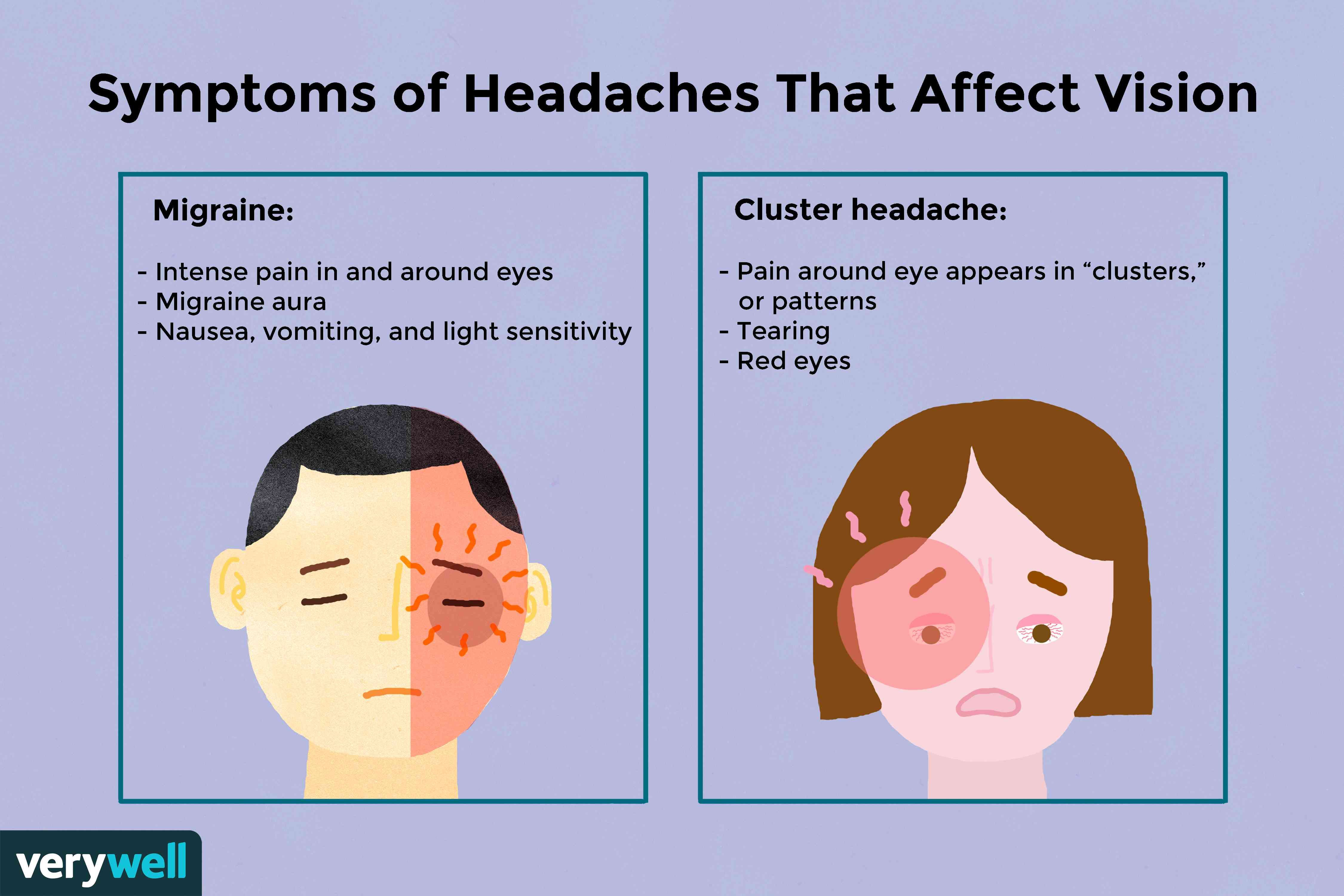 07.23
07.23
For many of us, a headache is not a problem, as it is easily resolved after taking pain medication. And when the pill stops helping, we do not go to the doctor, but switch to stronger drugs and even injections.
Unfortunately, the consequences are lost time. The time when you could, but did not want to discover the problem that your body is signaling persistently. After all, a headache is not an independent disease, it can be a symptom of serious diseases. Only a doctor should diagnose and treat them.
Why headaches occur
As a rule, not the whole head hurts, but some part of it. Causes of headache depending on its location:
- the temple area can hurt with sudden changes in blood pressure, poisoning the body with toxins or infectious diseases;
- headache in the back of the head occurs with high blood pressure, problems with the cervical spine (osteochondrosis, spondylosis) or hypertonicity of the muscles of the neck and collar zone;
- if the forehead hurts, this is probably an inflammatory disease of the paranasal sinuses – frontal sinusitis.
 It can also be a sign of increased intracranial pressure or occipital nerve entrapment. Such pain accompanies very serious diseases – meningitis, pneumonia, malaria, typhoid;
It can also be a sign of increased intracranial pressure or occipital nerve entrapment. Such pain accompanies very serious diseases – meningitis, pneumonia, malaria, typhoid; - if painful sensations occur around the eyes, these are signs of migraine, vegetative-vascular dystonia. This is how eye diseases, including glaucoma, can manifest themselves.
Be careful if your head hurts regularly, with a certain cyclicity. This is a clear and specific signal – you have chronic diseases, or the level of stress and hard work is very high.
Different headache intensity
Headache in a particular area can be of varying intensity: from sharp and sudden attacks to prolonged debilitating. This is also valuable diagnostic information.
The intensity of the pain in the head can be:
- Strong, sometimes unbearable. The causes of such pain are migraines, pressure drops, sinusitis, traumatic brain injuries or infections.
 If the pain does not subside with time, but grows, it means that the painful process is progressing.
If the pain does not subside with time, but grows, it means that the painful process is progressing. - Long lasting. This is a very serious SOS signal that our body can only give. It can indicate lesions of the nervous system of an infectious nature, meningitis, tuberculosis, parasitic diseases, and even a brain tumor. Particularly worrisome frequent headache.
- Pulsating. This is the most common manifestation of migraine. However, it can also be vascular diseases – brain damage, impaired outflow of cerebrospinal fluid or venous outflow. Pulsating pain is caused by some types of infectious lesions, otitis, glaucoma. A severe and prolonged throbbing headache is especially dangerous.
- Sudden. P As a rule, it is caused by a spasm of cerebral vessels. This happens in case of nerve infringement with cervical osteochondrosis, with a vascular crisis. An aneurysm rupture, intracranial hemorrhage is very dangerous.
 But a sharp headache often occurs as a result of stress, if a person is nervous or poisoned by low-quality products.
But a sharp headache often occurs as a result of stress, if a person is nervous or poisoned by low-quality products.
Be careful if your head hurts regularly, with a certain cyclicity. This is a clear and specific signal – you have chronic diseases, or the level of stress and hard work is very high.
Which diseases are accompanied by headache
Only a doctor can establish a diagnosis, after several stages of examination. After all, with similar symptoms, the causes of headaches are different. Here is a list of the main diseases accompanied by pain in the head:
- Migraine. Severe headache , often throbbing, the person is sick, irritated by light, odors. There is a general weakness, a desire to lie down. Often the pain is on one side of the face. A migraine attack can last a few hours, or maybe 2-3 days.
- Tension headache. The most common type of disease. Usually the head hurts slightly, but the pain returns again and again.
 It can last 6-7 days. The pain compresses the skull, is localized in the back of the head, frontal part, crown, or spreads to all departments. This type of pain occurs in people who are engaged in sedentary work, driving for a long time, or constantly in a state of stress. Their shoulder girdle is so constrained that it does not relax even during sleep. The patency of muscles, nerve impulses, and tissue nutrition are impaired.
It can last 6-7 days. The pain compresses the skull, is localized in the back of the head, frontal part, crown, or spreads to all departments. This type of pain occurs in people who are engaged in sedentary work, driving for a long time, or constantly in a state of stress. Their shoulder girdle is so constrained that it does not relax even during sleep. The patency of muscles, nerve impulses, and tissue nutrition are impaired. - Cluster disease. Very difficult to tolerate by patients, sometimes goes into a continuous form. The pain pulsates on one side of the head, compresses the eye or part of the forehead. The eye begins to water and swell. The peak of the attack lasts from half an hour to an hour and a half. Cluster pain is more common in men.
- Pain caused by infections. She is accompanied by chills, fever. The pain presses on the temples, eyes, forehead. With SARS, cough and runny nose join the symptoms. With meningitis, the pain is severe, throbbing, accompanied by vomiting.

- Pain resulting from trauma. Their nature and intensity depends on the nature of the injury. Characteristic for concussion, skull damage, displacement of the vertebrae in the cervical spine. Moreover, unpleasant sensations can occur immediately, or they can occur after some time.
- Sinus pain. It accompanies inflammation of the sinuses, therefore it is localized in the frontal part of the head or near the nose. The patient has a runny nose, nasal congestion. You can get rid of it only by curing the underlying disease.
- Pain provoked by intracranial pressure. These are massive, intense pain sensations covering the entire surface of the head and the area around the eyes. Patients describe them as pressing or bursting. Often a person is sick and he can hardly tolerate bright light.
- Pain arising from damage to the trigeminal nerve. Sharp, short (from 2 to 5 seconds), but very painful. Occurs suddenly in any part of the face. Most often, inflammation of the trigeminal nerve occurs in people with unhealthy teeth and oral problems.

What examinations are required
With complaints of headache, you should consult a therapist. First, the doctor collects an anamnesis – clarifies the nature, localization, duration of the headache. Remember when it first appeared and how often it recurs. In order to exclude additional factors that can provoke attacks, you need to undergo an examination by a neurologist, an ENT doctor, an ophthalmologist and visit a dental office. They will be able to accurately identify the causes and types of headaches and prescribe treatment.
Your doctor may recommend the following tests for you:
- electroencephalography – a study of the state of the brain. This is how vascular and tumor pathologies, hematomas are detected;
- x-ray – will show if there are signs of hydrocephalus, if there was a head injury or sinusitis;
- magnetic resonance imaging – this way you can detect a tumor, problems of cerebral circulation, diseases of the nasal sinuses, the consequences of a stroke.

- computed tomography – this way you can determine if there is a hemorrhage in the brain, what is the structure of the brain tissue and blood vessels;
- electromyography – determines the defeat of neural connections and nerves;
- Ultrasound of the vessels of the neck with Doppler – a popular procedure reveals atherosclerosis, vascular and blood flow pathologies, aneurysms;
- laboratory tests – tests will help detect inflammation, the presence of infection, cholesterol metabolism problems and autoimmune processes.
Headache treatment
The consequences of headache can be very serious. The more often and stronger the headaches become, the brighter their consequences will manifest themselves – up to muscle spasm and brain hypoxia. And besides, the underlying disease will inevitably begin to progress.
Headache treatment is not limited to the use of drugs – although the use of anti-inflammatory, painkillers and local analgesics is an important part of the treatment. For example, a course of drug blockades greatly facilitates the patient’s condition.
For example, a course of drug blockades greatly facilitates the patient’s condition.
Good help in the treatment of headaches will be:
- manual therapy is a method of applying manual massage techniques to the spine. Especially effective for migraine and tension pain;
- massage techniques. Effective for recovery from injuries and chronic migraines;
- acupuncture – the impact of medical needles through special points on the body. So you can activate the work of organs associated with certain nerve endings and start the process of self-healing;
- osteopathy – in this case, muscle clamps and changes in the joints and organs are worked out using special massage techniques on points on the patient’s body;
- physiotherapy – treatment with ultrasound, alternating or constant weak electric and magnetic fields, exposure to heat. Effective for different types of headaches;
- physiotherapy exercises – moderate physical activity, especially good in the treatment of post-traumatic conditions and overexertion pain;
- Botox injections – if the muscles are in spasm, an injection of Botox will relax the area of the body and relieve headaches;
- extracorporeal hemocorrection is a method based on blood purification from excess cholesterol and toxic substances.


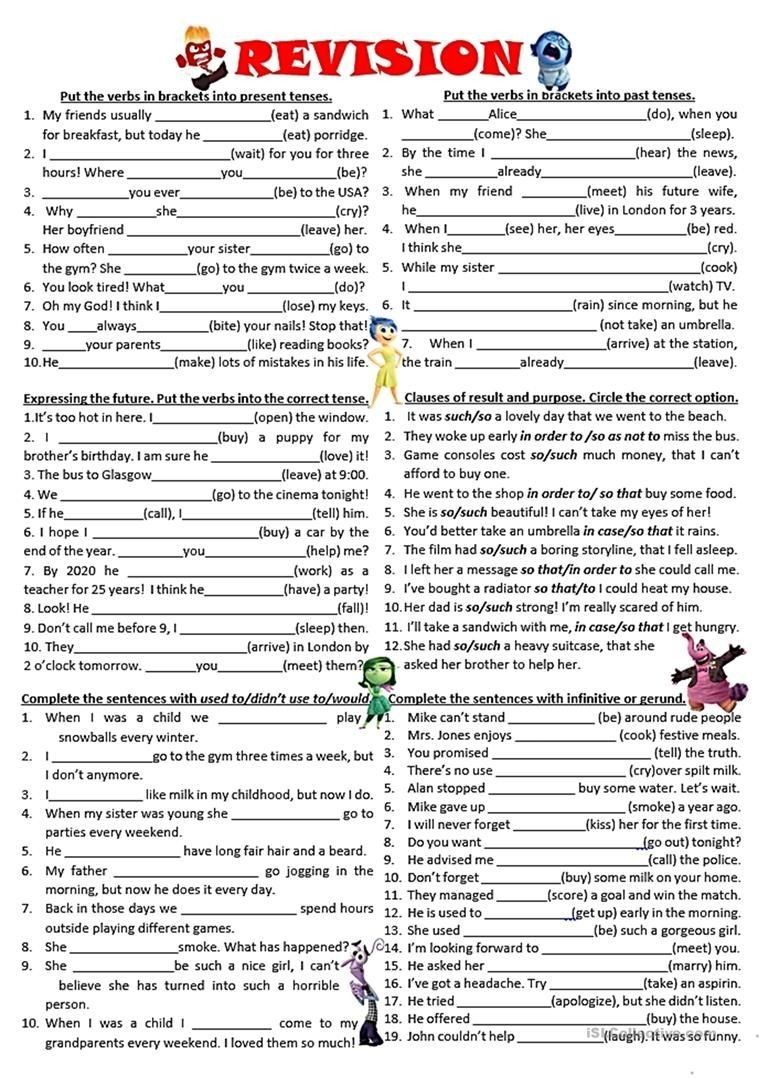
 With them, the head hurts in the back of the head, visual acuity and hearing may decrease.
With them, the head hurts in the back of the head, visual acuity and hearing may decrease. It can also be a sign of increased intracranial pressure or occipital nerve entrapment. Such pain accompanies very serious diseases – meningitis, pneumonia, malaria, typhoid;
It can also be a sign of increased intracranial pressure or occipital nerve entrapment. Such pain accompanies very serious diseases – meningitis, pneumonia, malaria, typhoid; If the pain does not subside with time, but grows, it means that the painful process is progressing.
If the pain does not subside with time, but grows, it means that the painful process is progressing. But a sharp headache often occurs as a result of stress, if a person is nervous or poisoned by low-quality products.
But a sharp headache often occurs as a result of stress, if a person is nervous or poisoned by low-quality products.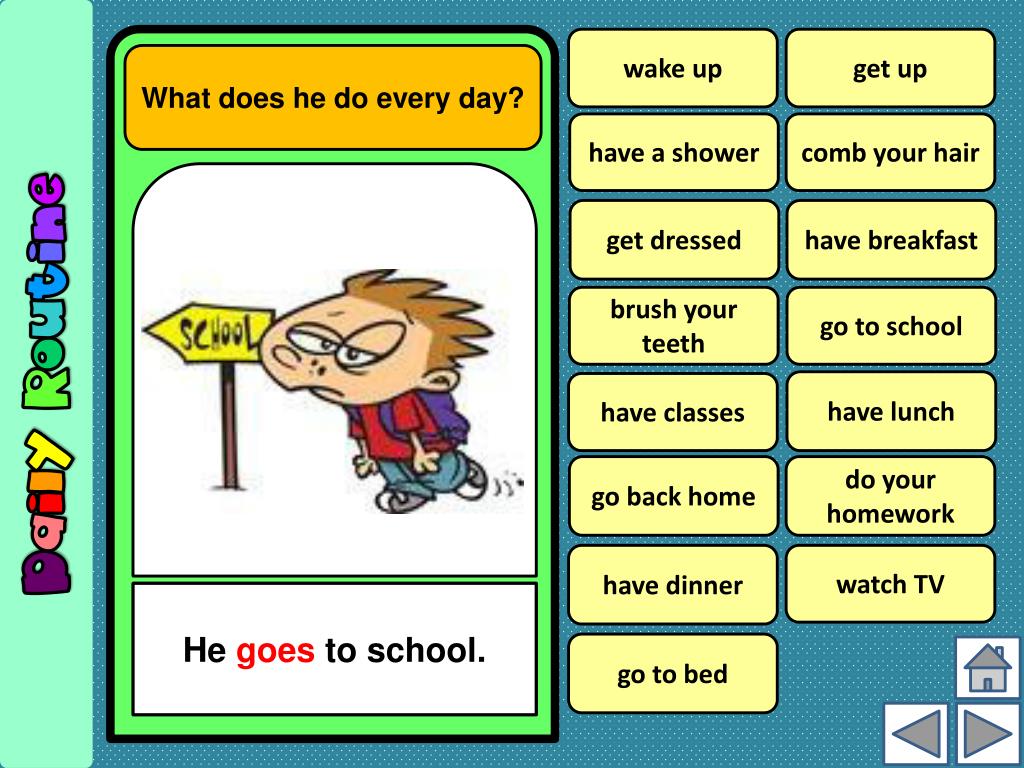 It can last 6-7 days. The pain compresses the skull, is localized in the back of the head, frontal part, crown, or spreads to all departments. This type of pain occurs in people who are engaged in sedentary work, driving for a long time, or constantly in a state of stress. Their shoulder girdle is so constrained that it does not relax even during sleep. The patency of muscles, nerve impulses, and tissue nutrition are impaired.
It can last 6-7 days. The pain compresses the skull, is localized in the back of the head, frontal part, crown, or spreads to all departments. This type of pain occurs in people who are engaged in sedentary work, driving for a long time, or constantly in a state of stress. Their shoulder girdle is so constrained that it does not relax even during sleep. The patency of muscles, nerve impulses, and tissue nutrition are impaired.
